Fabulous and spectacular, modern tableware offers table decor ideas for every taste and style. Modern tableware designers not only create beautiful and innovative pieces, they also employ a wide variety of production techniques and a range of unconventional material applications to enrich our dining experience.
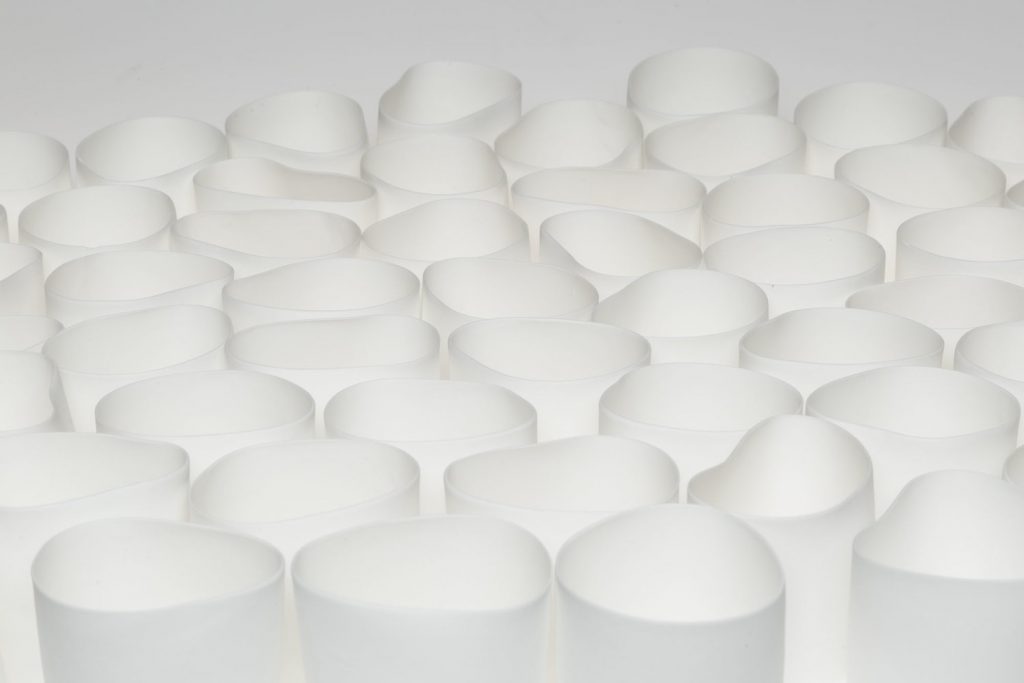
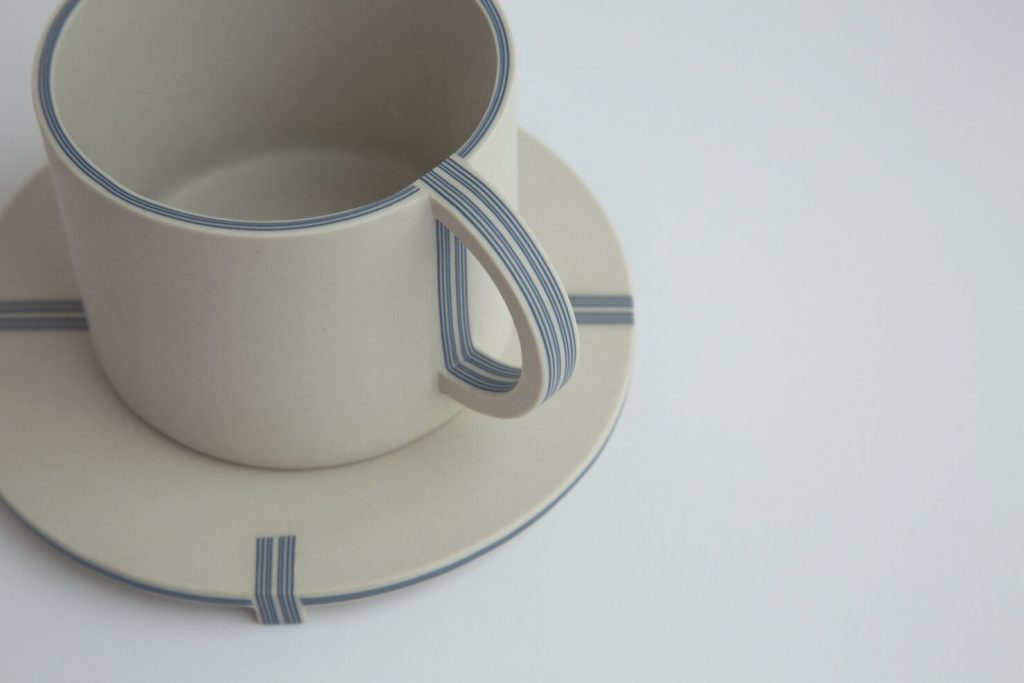
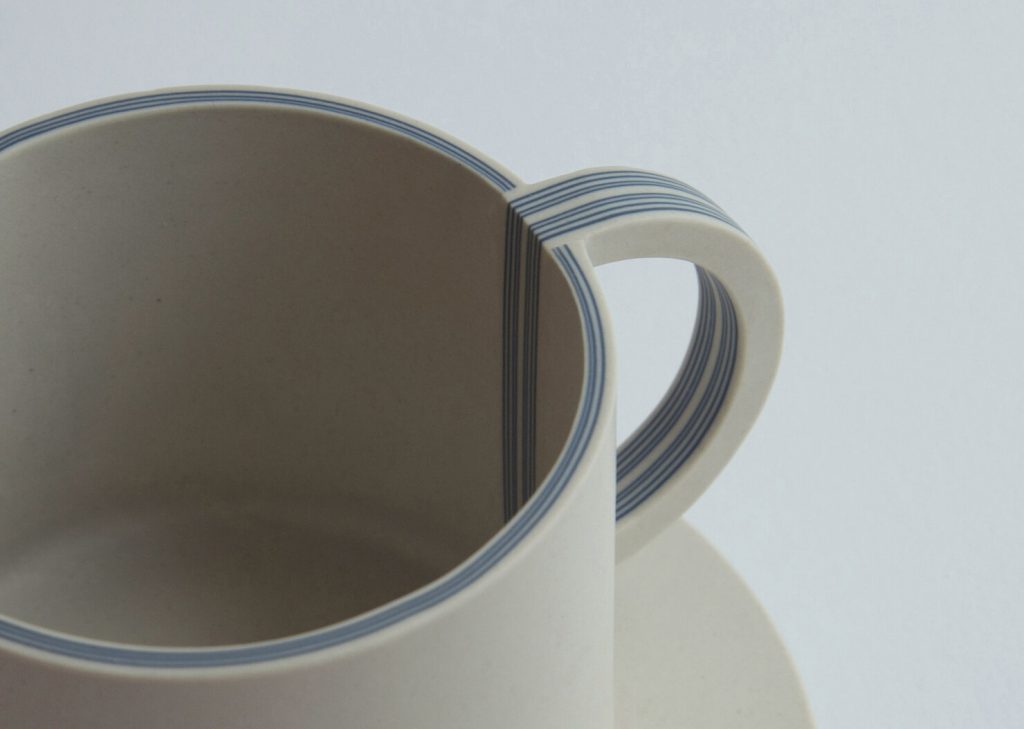
Plycelain by Yuting Chang
Chicago-based designer Yuting Chang has combined mass production method of slip-casting and age-old craft techniques to create her version of blue-and-white ware, the most classical and influential type of Chinese porcelain. Appropriately named Plycelain, a term coined by the designer as a reference to how plywood is constructed with layers of compressed wood, the collection encompasses multilayered tableware in matte creamy ceramics that shows its colour on the rims and edges, skillfully embedded within the clay.
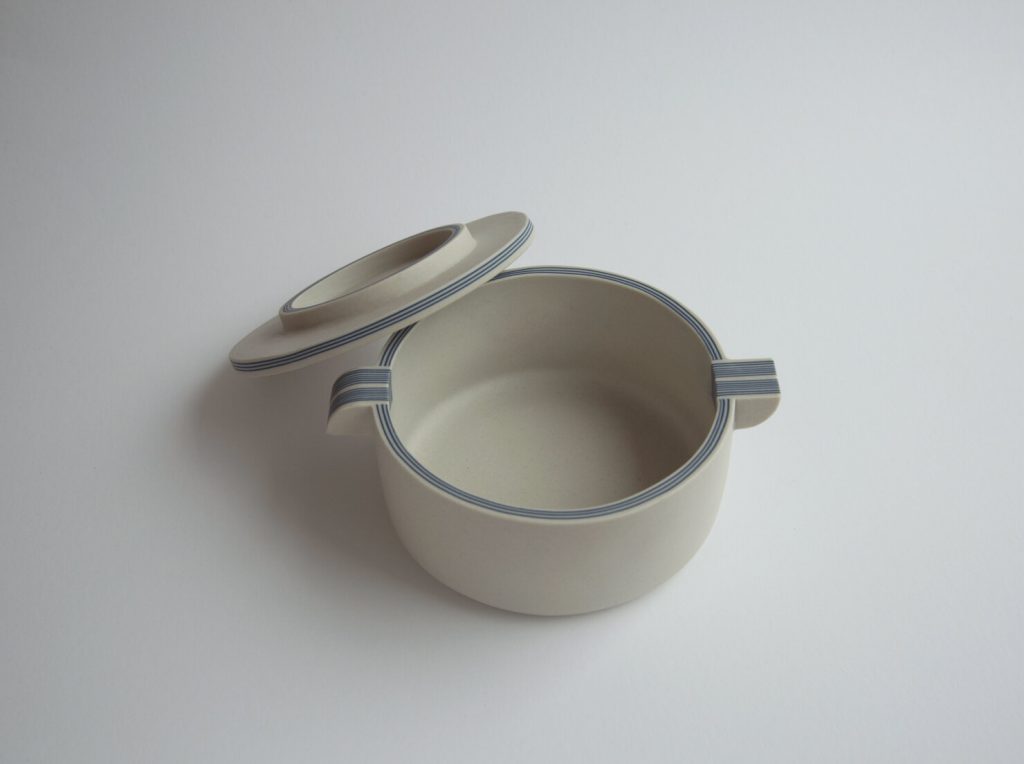
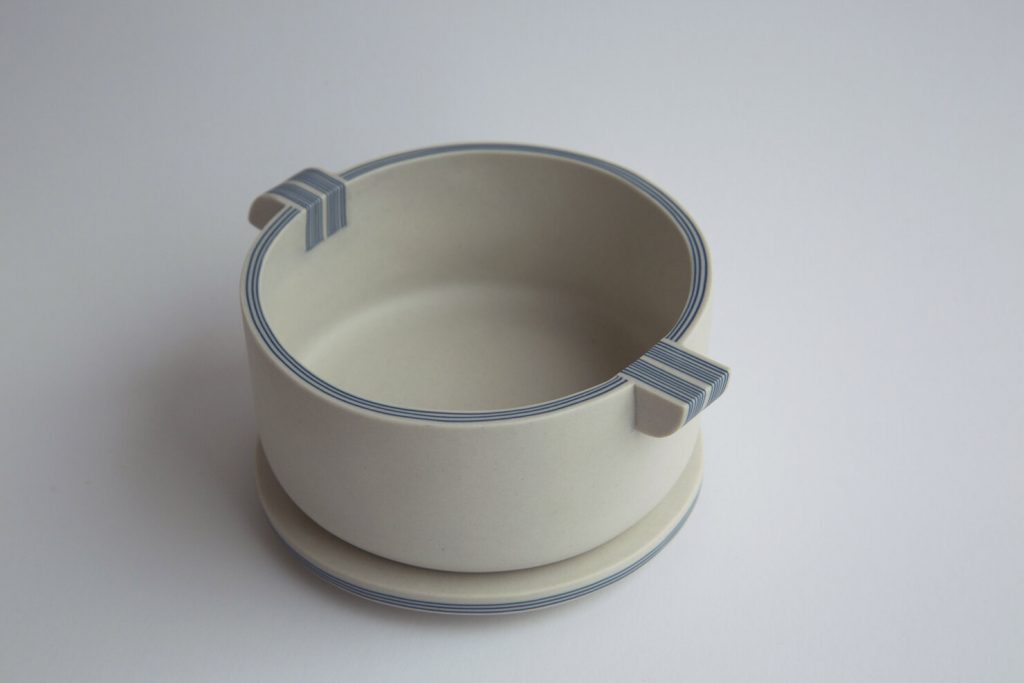
Plycelain by Yuting Chang
The designer builds in the traditional blue and white pigments into the very structure of the ceramics. Originally, slip casting is meant to create large quantities of standardized products, but Chang uses it differently switching between colors within the mould to keep the authenticity and individuality of the craftsmanship spirit.
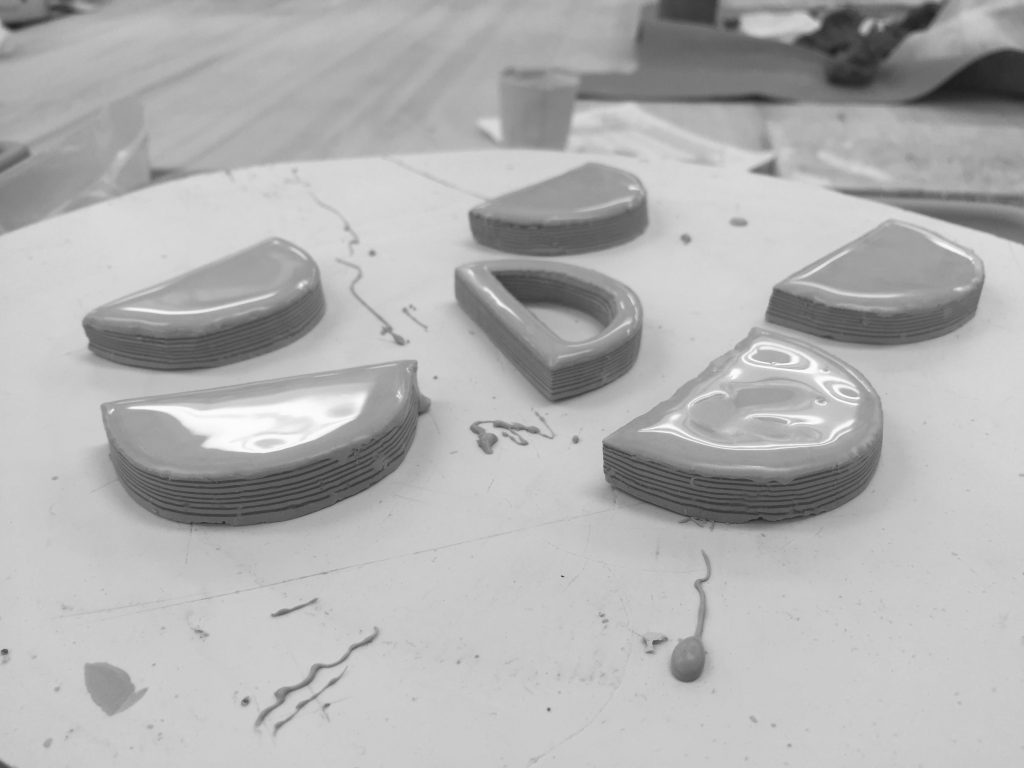
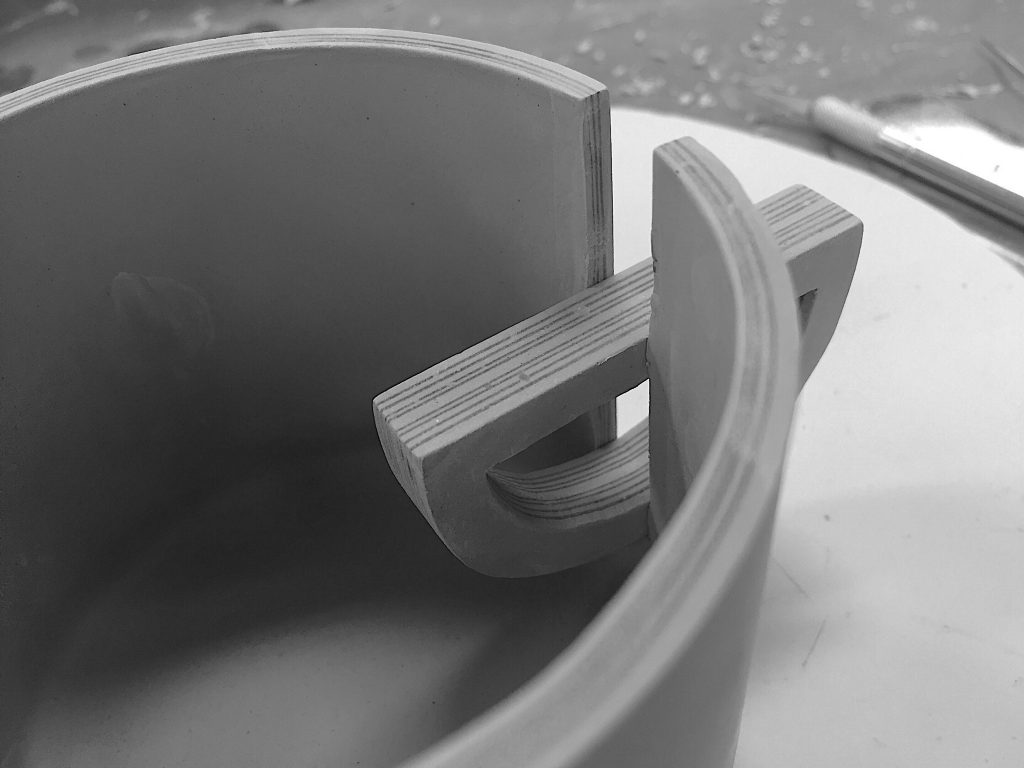
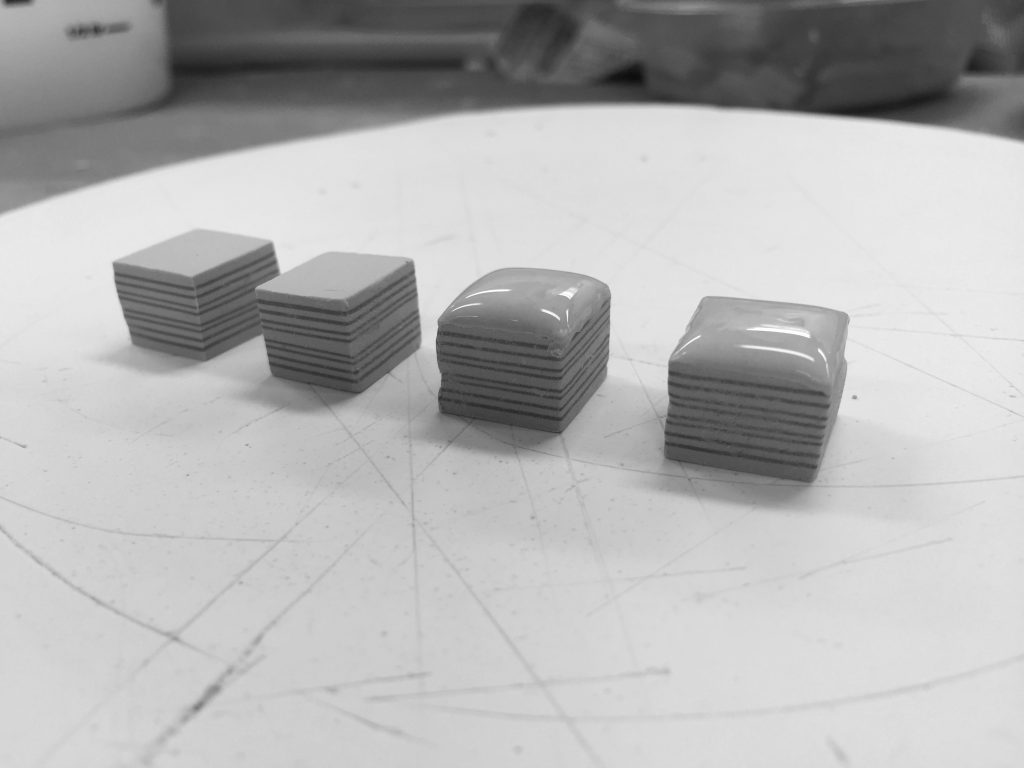
Plycelain by Yuting Chang
She incorporates up to 29 layers to her tableware, creating a pattern without actually painting on the clay in the traditional way. Different components are cast in various moulds before they are individually assembled by hand to achieve the desired look.
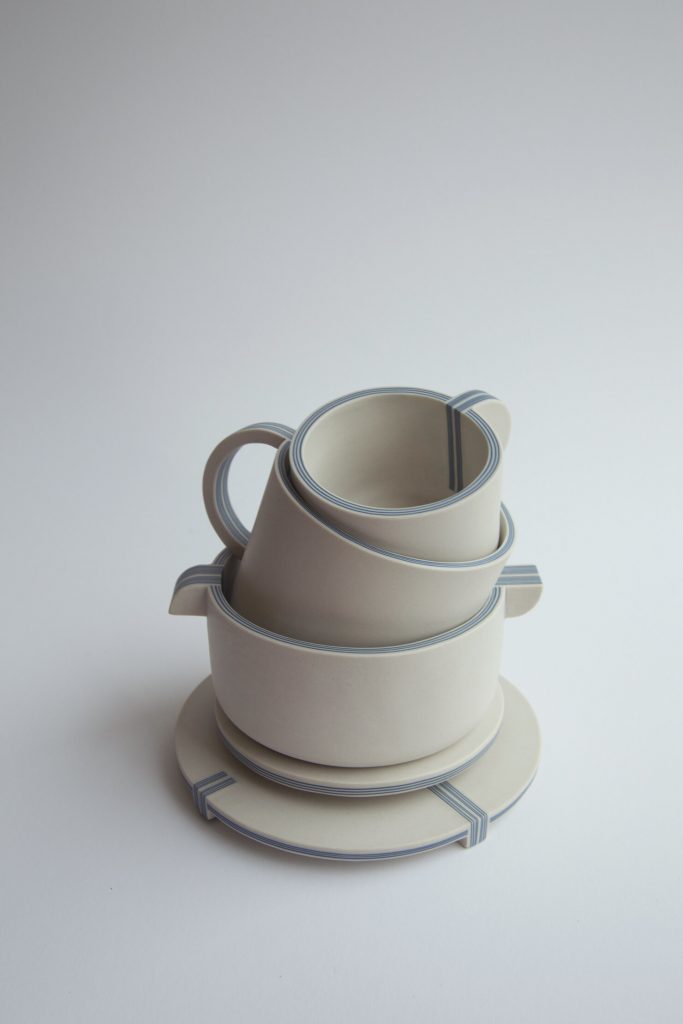
Plycelain by Yuting Chang
The resulting contemporary geometric pieces exhibits a minimal and elegant aesthetic that can easily be incorporated into modern kitchen designs, at the same time retaining the old spirit of traditional blue-and-white porcelain.
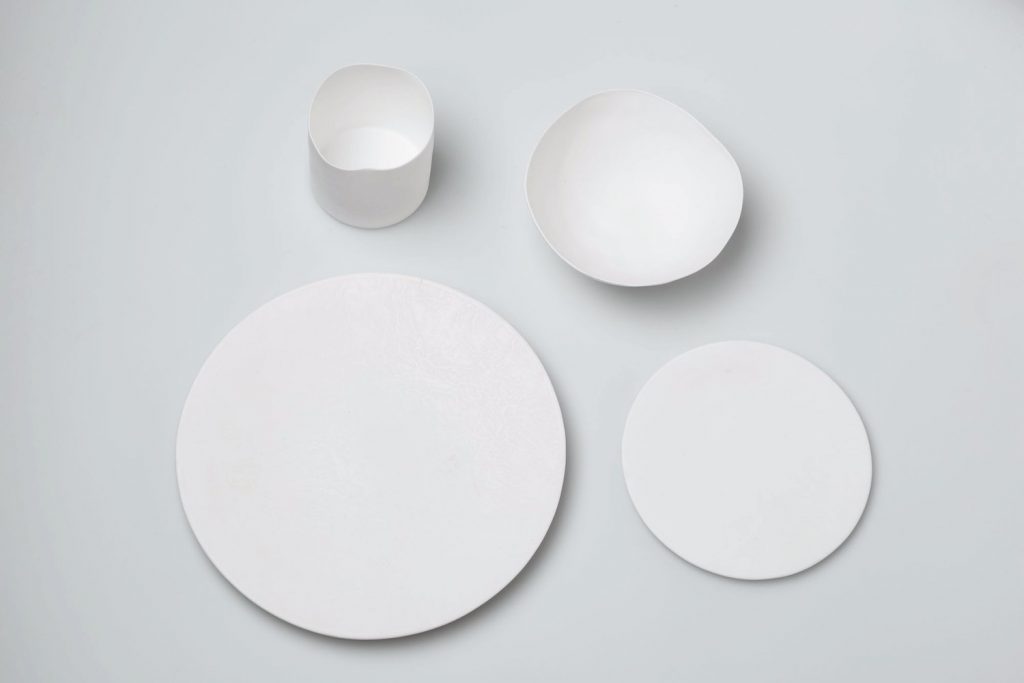
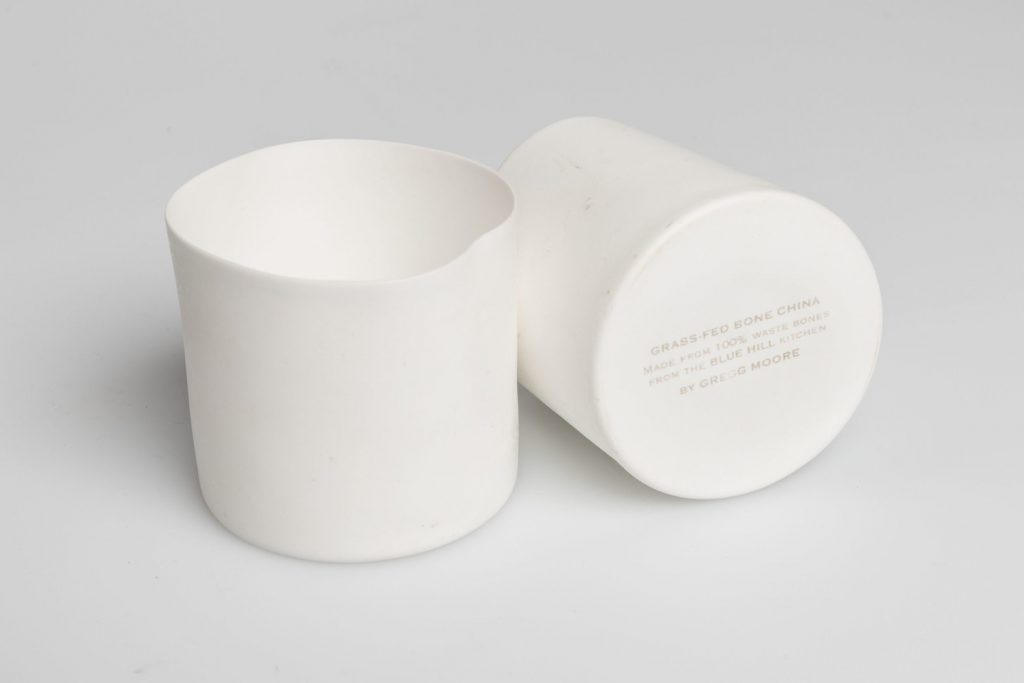
Bone china by Gregg Moore (also header image)
Ceramicist Gregg Moore has created bone china tableware for a restaurant outside New York, that is made utilizing the bones of the cows whose meat is served. In line with the restaurant’s philosophy, which seeks to utilize all parts of an animal, the bones that went unused in the kitchen are cleaned and fired, in a process called calcination, to turn them from a living material into calcium phosphate. This is then mixed with water, ground and pulverized to create a mixture that’s 50 per cent bone ash, 25 per cent English china stone and 25 per cent kaolin – an 18-th century recipe for bone china.
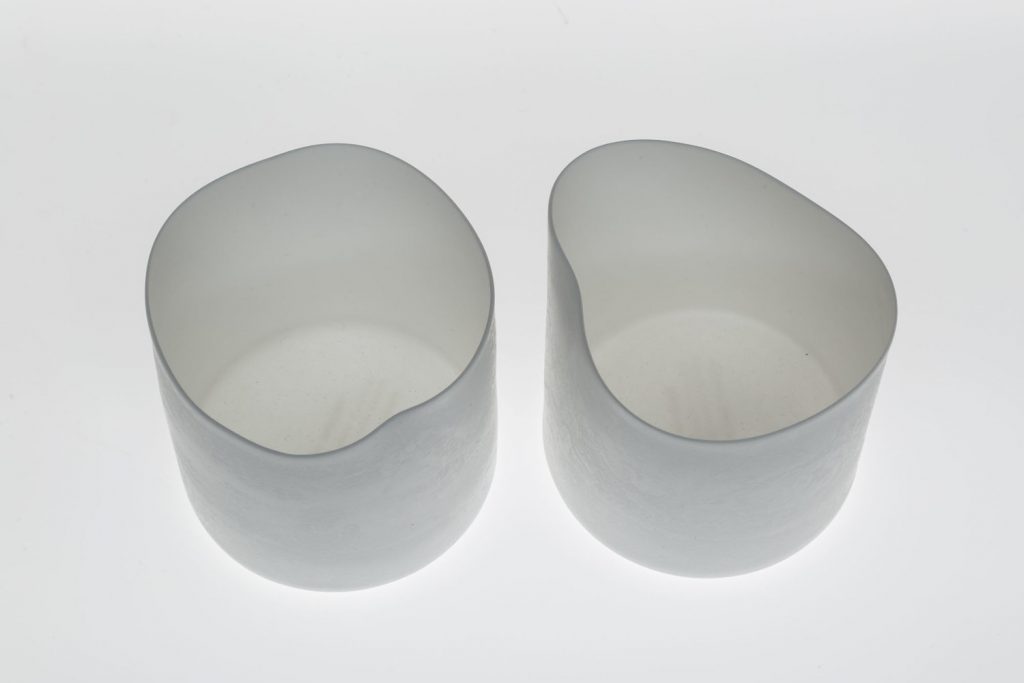
Bone china by Gregg Moore
The mixture finally gets mixed into a liquid slip and cast into a mould, where it remains for only three to five seconds to get as thin a result as possible. The less time the liquid spends in the mould, the thinner the wall is.
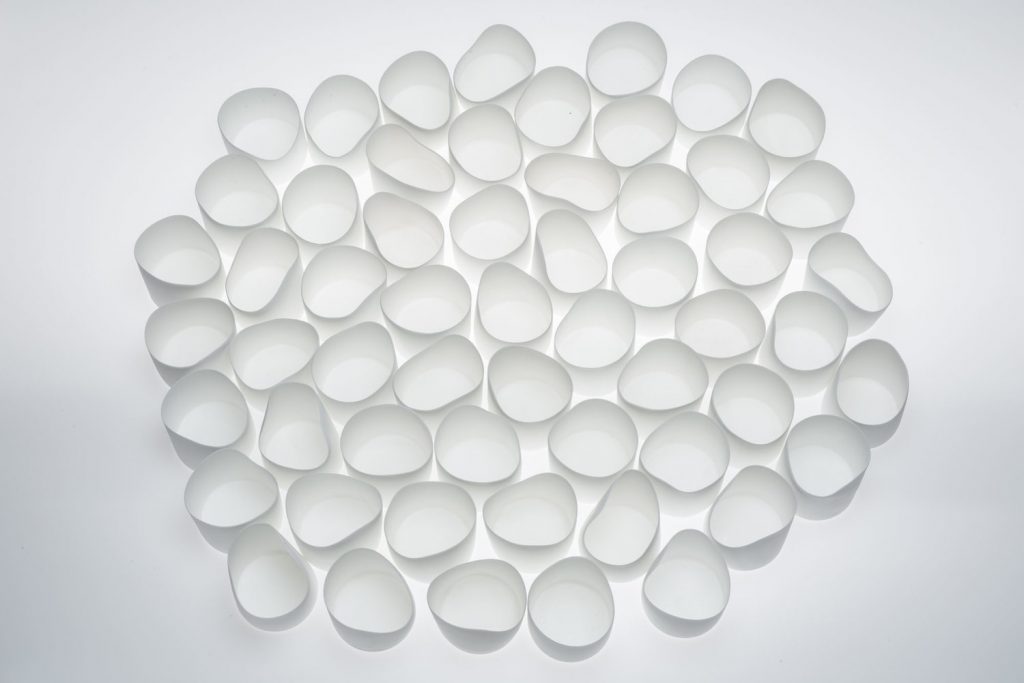
Bone china by Gregg Moore
Finally, after a day of drying, the pieces are fired. Although they go into this process perfectly round and symmetrical, the rims of the taller pieces bend to the intense heat in the kiln, creating gently curved, organic forms. The production technique endows the tableware with a distinctive luminescent quality. The pieces’ paper-thin walls are left unglazed to highlight the translucency of the material.
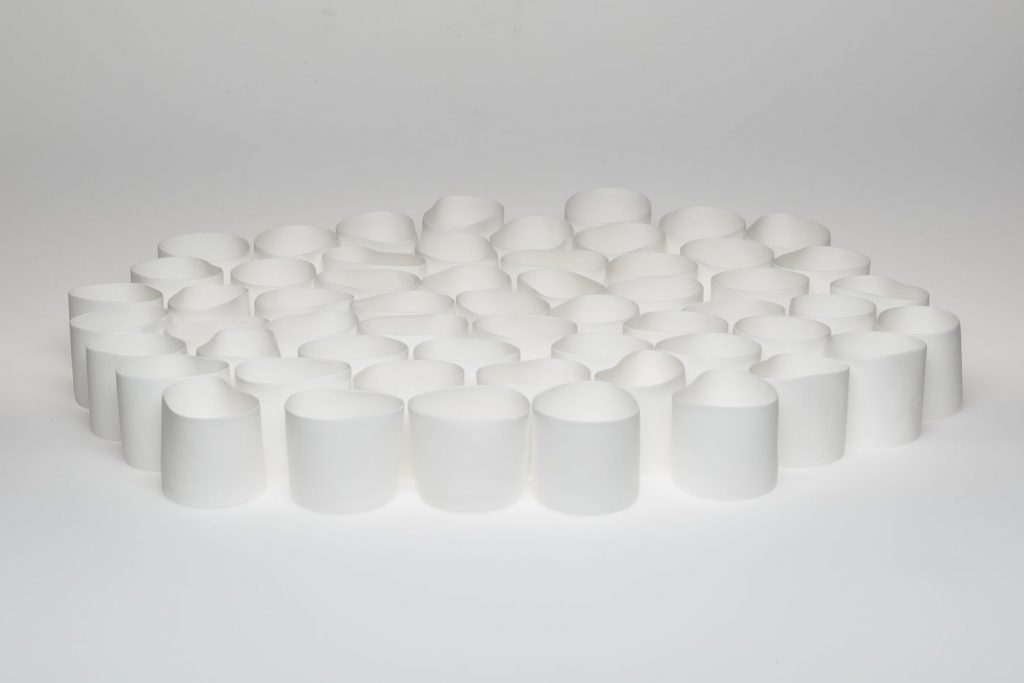
Bone china by Gregg Moore
According to Moore, who is a son of a butcher himself, bone china is the only material in the field of ceramics that was once alive, with everything else being geological or mineralogical. His crockery is an opportunity for an antiquated material like bone china that is generally associated with display of status to be able to express new ideas – shifting people’s mindsets when it comes to the ways in which we farm animals and the waste byproducts we create.
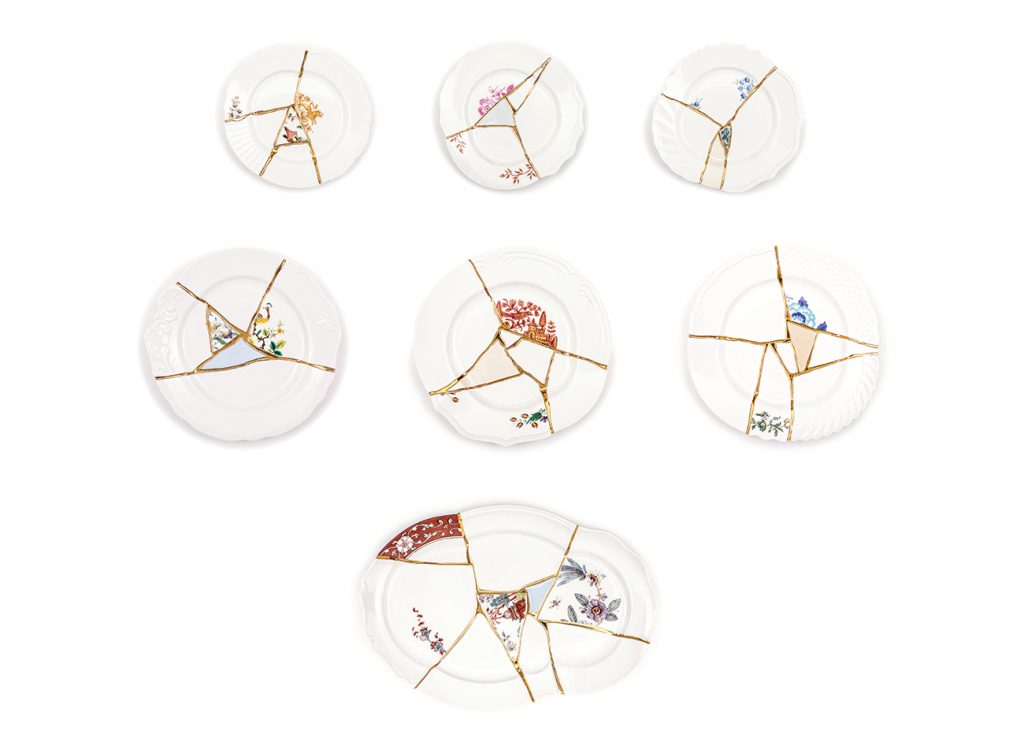
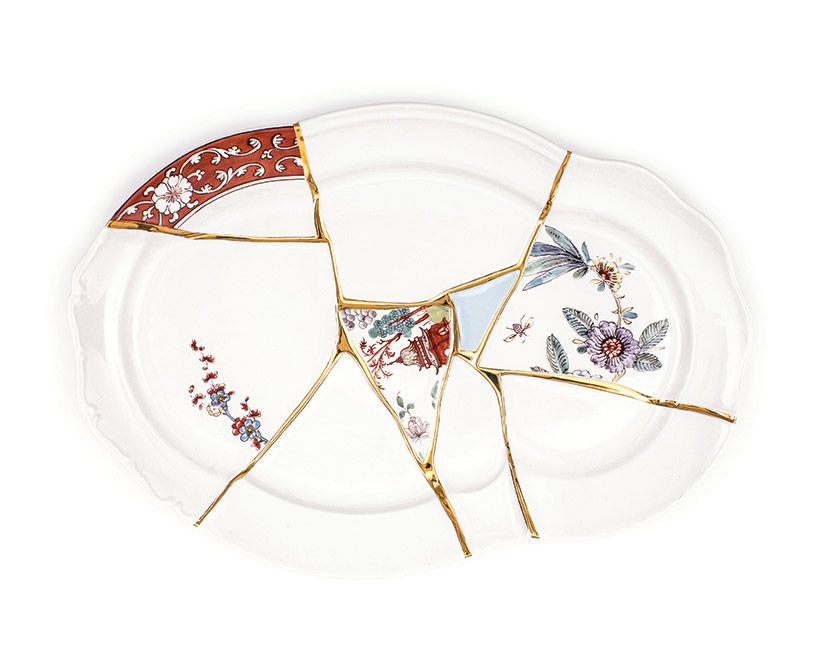
Kintsugi collection by Marcantonio for Seletti
Italian designer and artist Marcantonio Raimondi Malerba, founder of design brand Marcantonio, uses a more conventional material for the tableware he has developed for Seletti. He glues together broken pieces of porcelain of different colors and shapes with veins of precious 24-carat gold, utilizing the ancient traditional Kintsugi technique.
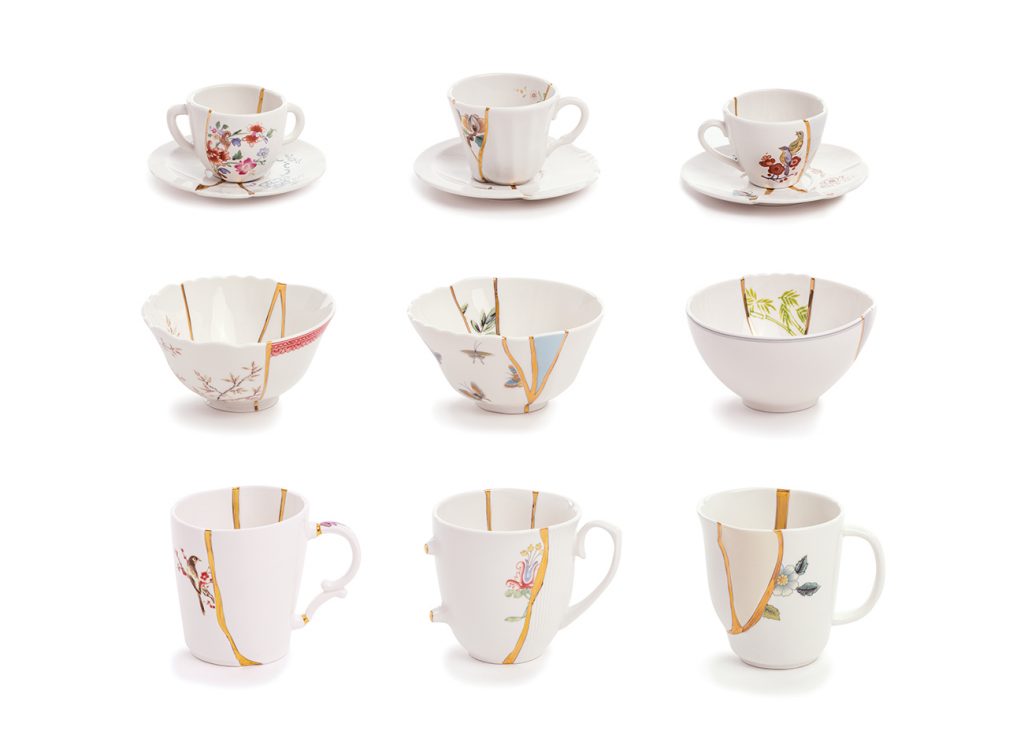
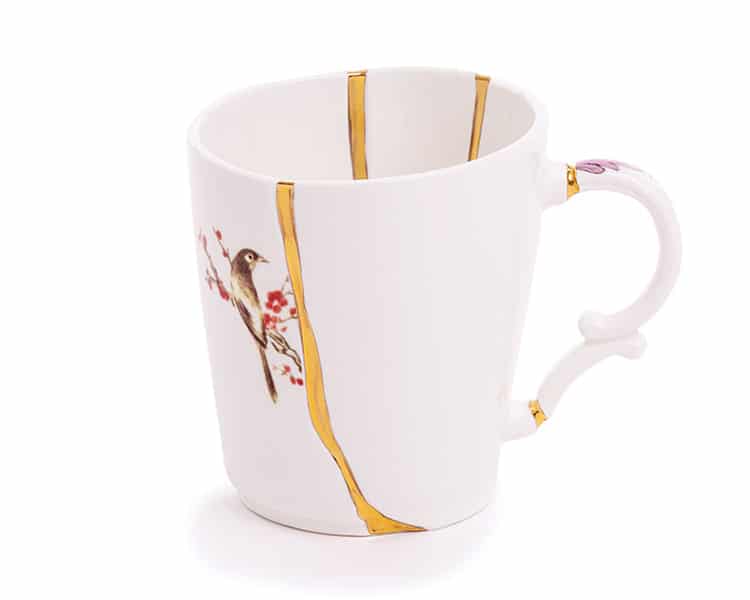
Kintsugi collection by Marcantonio for Seletti
Originally, the Japanese art method dating many centuries back utilized lacquer mixed with gold powder to repair golden ceramics. Marcantonio’s collection is a new take on the old craft. Just as scars make our body unique, it enables the beauty of imperfection while honoring the history of an object.
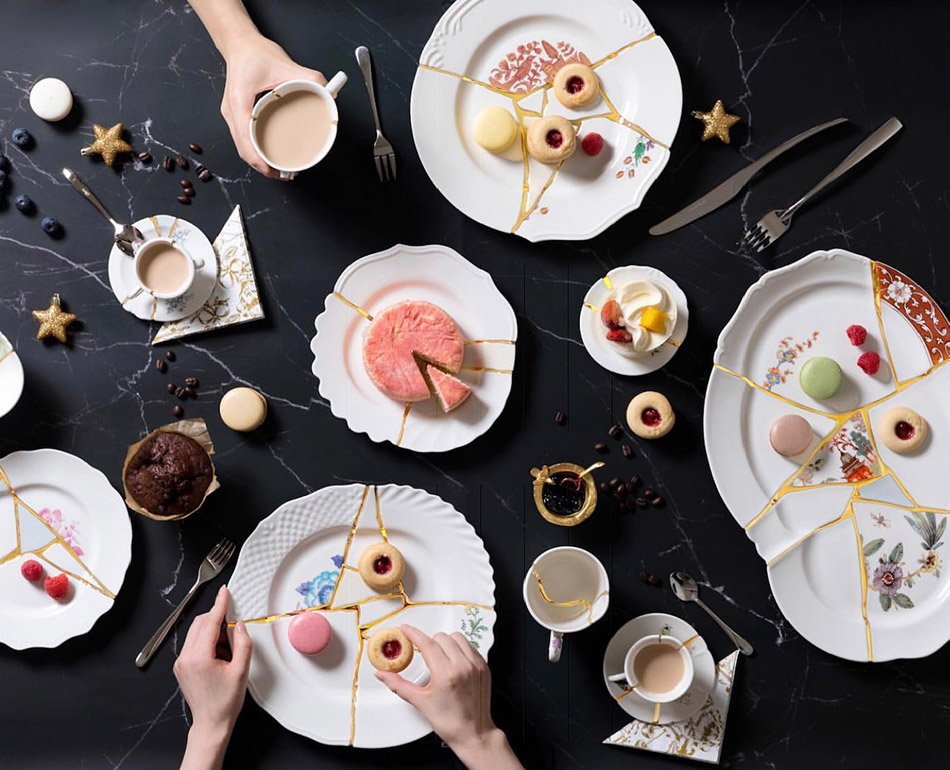
Kintsugi collection by Marcantonio for Seletti
In this way, the cracks of our favourite plates and cups can be repaired to get a new life in the home. Reminiscent of classicism, the Kintsugi tableware is however elegant and contemporary, new and disruptive.